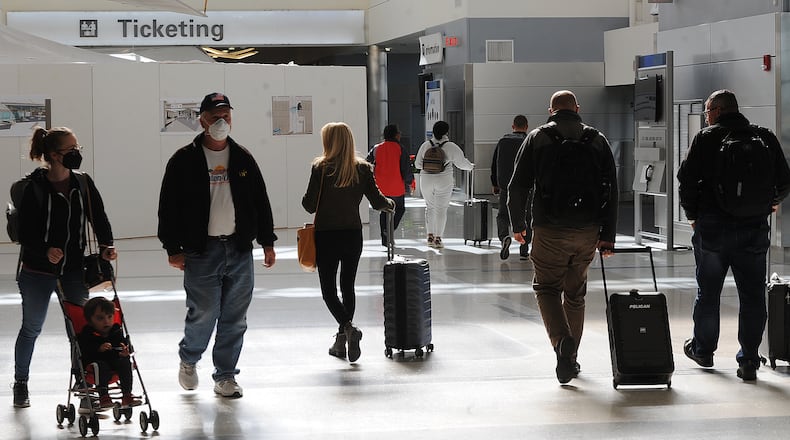“What we hear from the business community is, get us more flights,” Chris Kershner, president and chief executive of the chamber, said in an interview Tuesday.
According to the joint release, 72% of U.S. airports have less air service today than before the pandemic. About one in five flights scheduled in 2019 were no longer operating in 2021, according to the Regional Airline Association.
“Airlines fly for profit, not pride,” aviation analyst Henry Harteveldt, president of Atmosphere Research Group, told the Washington Post this year “And smaller towns are increasingly falling by the wayside.”
“Ease of traveling is the primary reason local business leaders cite when choosing to fly out of DAY (Dayton International Airport),” Dayton City Manager Shelley Dickstein said in the release. “We are committed to finding solutions for this problem to ensure DAY remains a viable option for the region’s business community.”
Kershner said his understanding is that “dozens of planes are grounded because of the pilot shortage.”
That shortage is worsened by two factors, as Kershner sees the problem — outdated Federal Aviation Administration rules requiring a certain number of hours in pilot training, and the tendency for pilots to be promoted to bigger airlines from regional carriers like Dayton’s own PSA Airlines.
This community has worked hard to partner with PSA to grow Dayton’s regional jet presence and to increase air service for the Dayton business travelers, Kershner said. The city supported PSA’s construction of a $14 million, 69,000-square-foot maintenance hangar at Dayton International in 2015.
“There are dozens of planes on the ground right now that would be flying — there would be more inbounds and outbounds (flights) out of Dayton — if they had the pilots for them,” Kershner said.
Air travel is essential for business. In 2009, when NCR left Dayton for the Atlanta area, one reason for the move given by former NCR CEO Bill Nuti was the relative paucity of flights from Dayton International. Flights to and from the Dayton airport often required “multiple hops” for customers and employees, Nuti told the New York Times in 2010.
Kershner believes that if the FAA allows the use of flight simulators for required pilot training hours, that could free up more pilots.
“There are changes we can make that would be safer and more efficient,” the chamber CEO said.
“The FAA needs to get out of the dark ages, change the rules and allow these pilots to meet their requirements with modern technology and simulators that mimic real world planes and environments,” Kershner said in a recent Dayton Daily News column.
The chamber and the city cite statistics from the Official Airline Guide, showing that between the four quarters of 2019 and the same period through end of 2022, 325 airports have experienced air service loss. These communities have lost an average of 31% of their flights. A full 161 airports have lost more than one quarter of their air service, the chamber and the city said.
Messages seeking comment were left for representatives of PSA Airlines and the city of Dayton.
About the Author

